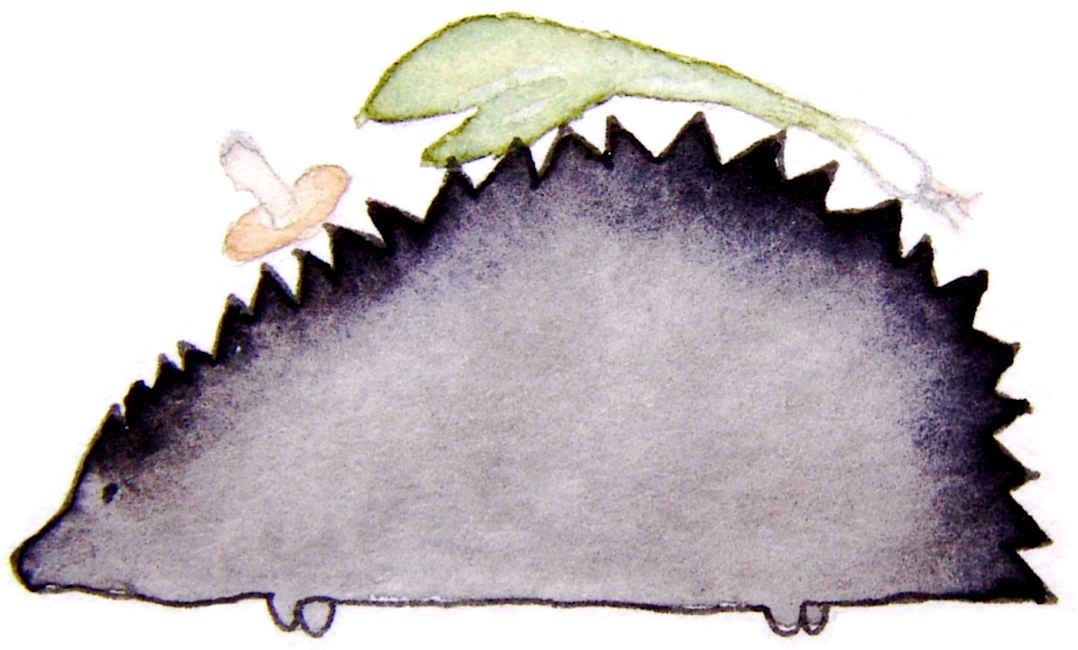Left to right: Sassafras, Elderberry flower, Wood Sorrel, Garlic Scape seedhead, Pine cones, Wild mustard, Lamb's Quarters leaves, Milkweed buds, Cattails shoots, Daylily buds, Oxeye Daisies, Spicebush leaves and twigs, Garlic Mustard leaves
Field Garlic and Onions (Allium vineale): At this time of year, field garlic and onions are going to seed. The immature seed cloves (shaped like a globe at the top of a scape) can be used like seasoning, just like garlic or onions.
Lamb's Quarters (Chenopodium berlandieri): A delicious, prolific, and nutritious spinach substitute.
Spicebush twigs and leaves (Lindera) : the twigs and leaves of this fragrant bush make excellent tea. Just don't dry them out - they'll lose their flavor.
Wood Sorrel (Oxalis acetosella): This tender, sour green is a favorite among the youngest foragers. Best eaten raw in a salad, but also makes fantastic pesto or lemonade.
Pi ne cones. A Vitamin C packed snack, spring conifer growth makes great pesto, sandwich or salad additions, decadent grilled treat, tart tea, or a citrusy note sprinkled on desserts. Recipes:
Forager Pascal Baudar explains how to use green pine cones as a natural wild yeast starter. On his Facebook (May 12th post) and in his beautiful book
Wild Mustard shoots. The mustard family has many varieties, both cultivated and uncultivated. Black Mustard is sweet, then spicy like horseradish. The stem tops and flowers/buds are great as a fried green (because heat will burn off some of the bitterness and reveal more good flavor).
How to cook wild mustards (and a note on nutrition)
Garlic Mustard leaves (Alliaria petiolata): One of our areas most aggressive invasives also happens to taste great (it first crossed the seas for culinary reasons). The leaves included in this share are extra large and especially great for stuffing like grape leaves, but also throwing fresh into salads/soups for spicy kick. Recipes:
Sassafras (Sassafras albidum). An aromatic woodland leaf, best for thickening soups, but also good for teas.
Elderberry flowers (Sambucus): elder flowers, which precede the berries, are fragrant and delicate in taste - great for desserts and drinks.
Cattail hearts (Typha): a versatile and delicious wild vegetable. At this time of year, the edible parts are the tender centers or hearts of new shoots. Eat them raw or lightly cooked - they taste like a mix of cucumber and squash.
Milkweed buds (Asclepias syriaca) : blanch or steam first to get rid of the bitter latex. Then, treat like you would a broccoli or pickle as a great caper substitute!
Day Lily (Hemerocallis fulva)- use just like squash blossoms. Opened flowers can be eaten fresh or stuffed and baked; the unopened buds can be lightly sauteed or battered and fried.
Oxeye Daisies (Leucanthemum vulgare). A mild edible flower, great as a wild garnish, over salad, soup, grain, etc. The flowers, buds, and leaves (to a lesser extent not that it's bloomed) are delectable.

